UC Blogs
Proper Herbicide Application Timing Critical in Seedling Alfalfa
Many growers have good intentions when it comes to controlling weeds in seedling alfalfa but often fields end up being treated beyond the optimum...
National newspaper offers its take on California water issues
The Wall Street Journal today ran a brief article about California's water situation as part of its Innovations in Agriculture series.
Reporter Jim Carlton noted that California leads the nation in farm revenue, but is also one of the country's driest states, and most populous. How do we do it?
"If you have limited water supplies, you have to be as careful and efficient as you can with it," says Larry Schwankl, UC Cooperative Extension specialist in the Department of Land, Air and Water Resources at UC Davis.
The article described advances in irrigation technology that have enabled farmers to improve irrigation efficiency.

Micro-sprinklers, such as those shown above watering almonds, are much more efficient than flood irrigation.
Princess Flower Pruning Pitfalls
I love my princess flower (Tibouchina urvilleana), which grows in front of my home office window. The shrub’s airy structure lets light in through the window, yet provides enough screening that I’m not distracted—well, not quite as much—by the activity in the back yard. Its branches provide a convenient resting place for hummingbirds and finches (which is definitely distracting!). The plant produces beautiful, large, purple flowers nearly non-stop. And when the blooms slow, the soft red-rimmed green leaves alone are pretty enough to carry the show.
Unfortunately, in recent years, my princess flower has grown spindly and lopsided. I’ve lightly pruned it in the past to prevent legginess, but this year, I finally reached the point where I would have to take drastic measures or replace the plant. A neighbor prunes her smaller shrub down to the bare wood each year and it comes back as a thick bush covered in blossoms each spring. So I decided to experiment and radically prune the plant before making a decision about removing it entirely.
In February of this year, I grabbed the pruning saw, took a deep breath and started pruning the princess flower down to bare wood. By May, I had just about given up any hope of seeing signs of life, when leaves finally appeared. In September, the plant had grown . . . lopsided again. (And no, that side doesn’t get more sun.) Attached are photos from those months.
While it was a grand experiment in pruning, the results weren’t what I hoped. Although I toyed with the idea of another hard pruning this winter, instead I think I will replace the plant with another princess flower. Another neighbor recently planted princess flower standards—maybe I’ll try one of those!
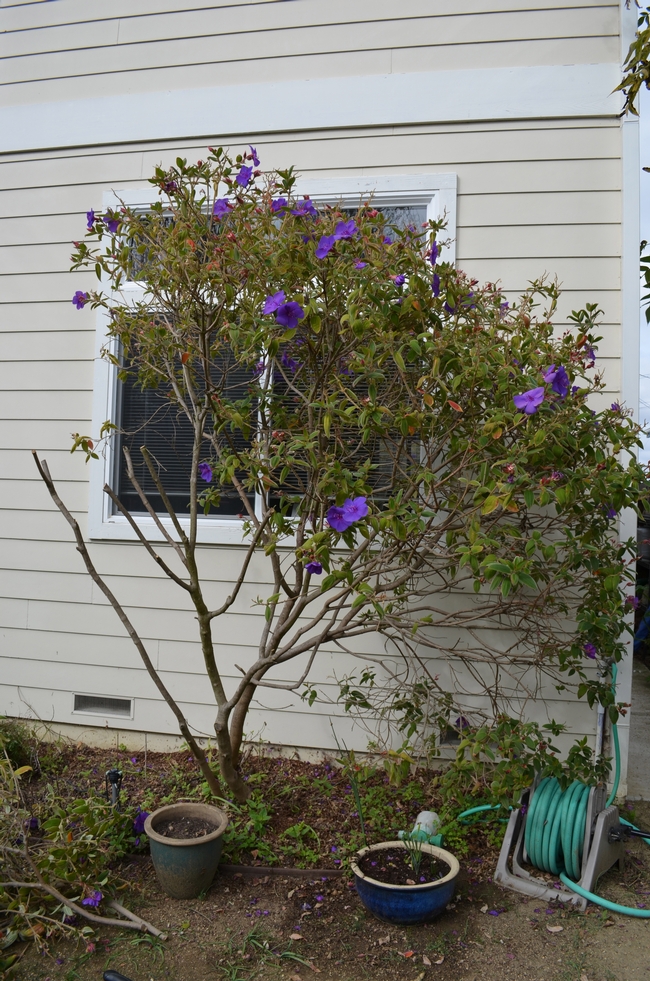
The pruning begins. (photos by Erin Mahaney)
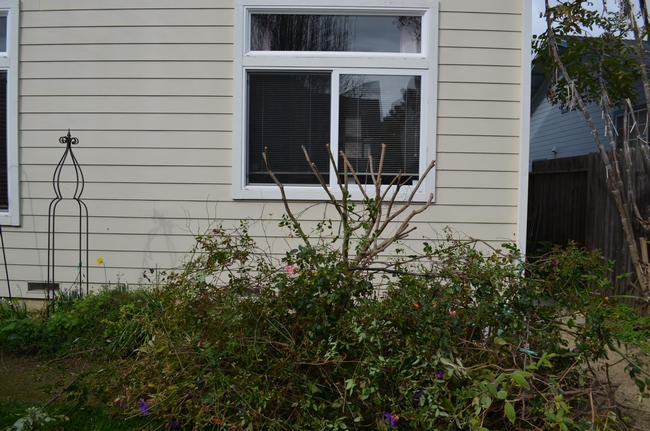
Pruning completed.
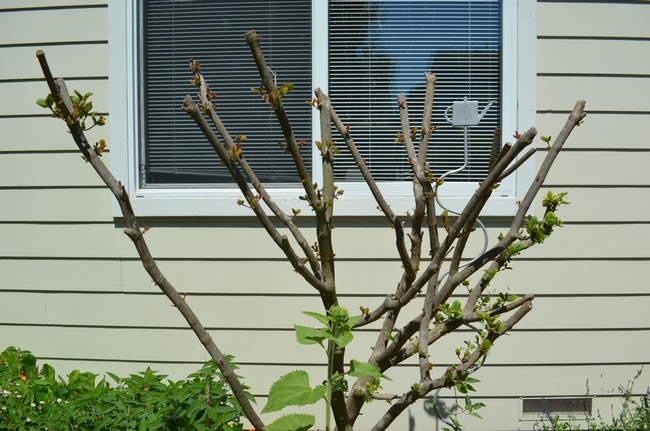
Not much happening yet in May.
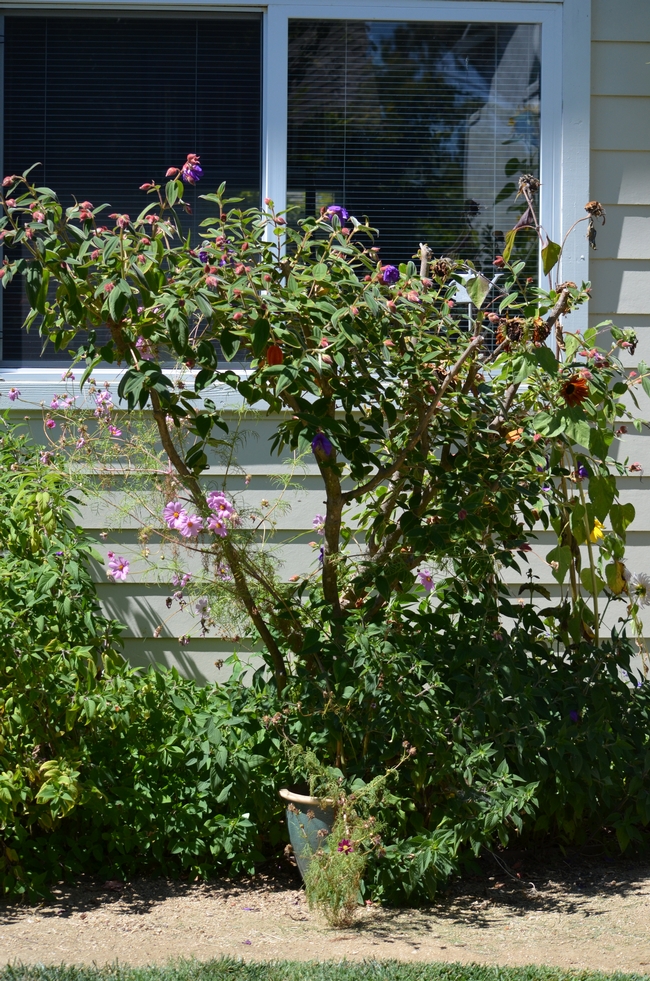
Still lopsided in September!
Beware of Tarragon Seeds
Whoops! In my excitement to get some tarragon into my newly planted winter garden, I almost bought a package of tarragon seeds. Little did I know at the time, that tarragon seed packaged for purchase is Russian tarragon (Artemisia dracunculus 'Indorus'), a far less tasty or aromatic herb than its wonderful anise-like cousin, French tarragon (Artemista dracanculus), or True Tarragon. Apparently, one cannot buy French tarragon seeds even if one tried, and the Russian tarragon has little or no flavor.
Once I realized this, I deducted that I would need to start my plant by planting a seedling, a cutting, or a division from an existing plant. Through some research, I also discovered that I would need to wait till spring to obtain my start. Division of this plant every two to three years is important, as, if allowed to do so, its serpentine roots will actually strangle the plant; thereby its name, which came from the French word, "esdragon", which means, "little dragon." Also, division is recommended to simply ensure the plant's vigor and flavor. So if you have a tarragon plant in your garden, dividing and sharing it with another gardener is a natural. (That's a hint.)
Tarragon needs to grow in good draining, loamy soil and makes a lovely potted plant. Though the plant dies back in the winter, mulching the roots is recommended to protect it from frost. It needs moderate water and full to partial sun. Some references say grow in partial to full shade, others recommend sun with some shade in the hottest part of the day. It is probably best to simply keep an eye on your plant and provide some shade if it seems indicated.
The plant most often fails due to being planted in acidic and or wet soil. Flower stems need to removed in late spring to keep the plant productive. The plant can suffer from rotting roots and sometimes mildew.
So, not until next summer will I be cooking my chicken, fish or preparing my salad with my home-grown favorite herb. And since I mentioned cooking, here are a few tarragon tips:
- Add tarragon to a long simmering stew or soup in the last 15 minutes of cooking.
- Slip tarragon leaves under the skin of the chicken you are roasting.
- Freeze or preserve tarragon in white vinegar.
- Dry by hanging a bunch upside down in a warm, dry place.
Bon Appetite!
Plants, Pollinators and UC Davis
If you've never been to a UC Davis Arboretum plant sale, you should. The last plant sale of the year will take place Sunday, Oct. 14 from 9 a.m. to...
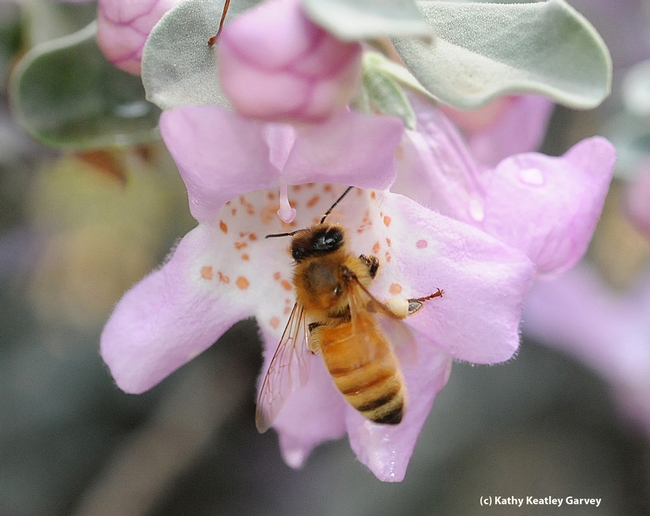
Honey bee on a cenizo, Leucophyllum frutescens. (Photo by Kathy Keatley Garvey)
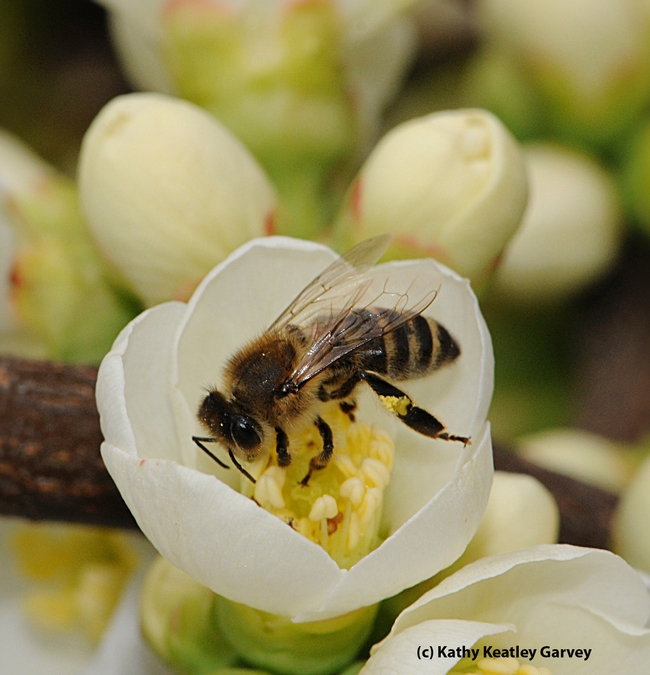
Honey bee on a white flowering quince, Chaenomeles speciosa "Contorta." (Photo by Kathy Keatley Garvey)
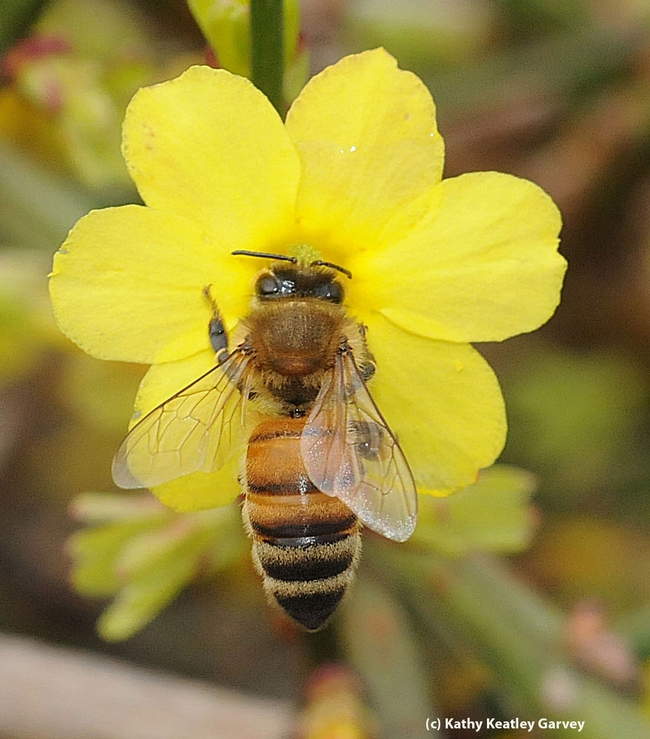
Honey bee on winter jasmine, Jasminum nudiflorum. (Photo by Kathy Keatley Garvey)

